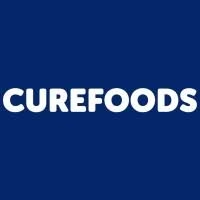Bengaluru-based cloud kitchen operator Curefoods, which runs brands like EatFit, CakeZone, and Krispy Kreme, has received approval from capital markets regulator SEBI for its ₹800 crore initial public offering (IPO), according to sources familiar with the development.
The IPO will consist of a fresh issue of shares as well as an offer-for-sale (OFS) of up to 4.85 crore equity shares, allowing several early-stage investors to partially or fully exit. Curefoods’ founder and CEO Ankit Nagori will not be selling any shares in the public offering.
Who is selling shares in the IPO?
Among the investors looking to offload stakes are Iron Pillar, Crimson Winter, Accel, Chiratae Ventures, and Curefit Healthcare, which was co-founded by Mukesh Bansal and Nagori. Iron Pillar is set to be the largest seller, offering 1.91 crore shares—almost double Crimson Winter’s 97.6 lakh and significantly more than Accel (45.7 lakh) and Chiratae (36.6 lakh). Curefit Healthcare plans to sell a smaller tranche of 12.8 lakh shares.
Iron Pillar is also likely to benefit the most from the IPO, with an estimated exit value approximately 2.6 times higher than that of Accel and Chiratae, based on the weighted average acquisition price.
How will Curefoods deploy the IPO proceeds?
Out of the ₹800 crore primary issue, Curefoods plans to use ₹152.5 crore to set up new cloud kitchens and expand infrastructure, and ₹126.9 crore for repayment or prepayment of borrowings. Another ₹92 crore will be allocated to Fan Hospitality, its wholly-owned subsidiary that manages kitchen infrastructure and operations. The company has also earmarked ₹40 crore for lease deposits and ₹14 crore for marketing and brand-building initiatives.
Curefoods also retains the option to raise an additional ₹160 crore via a pre-IPO placement, which could proportionally reduce the size of the fresh issue.
Financial Performance:
Curefoods has witnessed rapid revenue growth over the past two years, nearly doubling from ₹382 crore in FY23 to ₹746 crore in FY25. However, the company continues to post losses. Net loss stood at ₹170 crore in FY25, largely flat year-on-year, while EBITDA losses narrowed significantly from ₹276 crore to ₹58 crore during the same period. Despite improvements in operational efficiency, the company remains cash-intensive, spending ₹1.27 for every ₹1 earned.
Key Risks:
Investor caution is warranted due to high employee churn, which stood at 111.73% in FY25, after exceeding 120% in the prior two years. Additionally, Curefoods is heavily reliant on third-party aggregators such as Swiggy and Zomato, which contributed 82.2% of revenue in FY25. Any changes in platform policies or commission structures—currently around 18–22%—could materially impact profit margins.
Disclaimer: This news article is for informational purposes only and should not be considered as investment advice. Investors are advised to conduct their own research or consult a financial advisor before making investment decisions.

